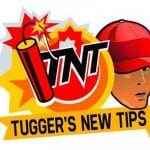High-Pressure Pump Losing Pressure?
Did you know that water flow has a direct correlation to your pump’s RPM (Rotations per Minute)? RPM fluctuations can, in turn, affect pressure by altering restriction of flow in the pump outlet line. However, there are many reasons that high-pressure pumps can lose pressure – check out our troubleshooting tips and tricks below!
Clean Your Pump Inlet
Pump inlets should be the first place to check when your pump loses pressure. To start, be you have a clean filter on the line before any liquids enter your pump. This will minimize trouble with pump seals and valves. Be sure to clean the filter regularly, too, as clogs can reduce pressure! Next, be sure you have a flow control valve installed in the tank to maintain proper liquid levels, ensuring you don’t accidentally starve your pump! A temperature control valve is also needed to keep your liquid temperatures within your pump limits. Overheating a pump will ruin your packing seals and valve assemblies very quickly, resulting in loss of pressure.
Hoses and fittings are also another major culprit when a pump begins losing pressure. Air leaks and wear can negatively impact pump performance! Conduct regular hose line inspections and replacements.
Proper Pump Drive is Essential
If your pump drive RPM’s begin to change, this can result in pressure loss as well. To maintain a consistent flow and pressure, the proper drive is mandatory. Be sure that when you set up your pump system that you calculate the Horse Power required. Calculate this from the pressure, flow and efficiency of your selected pump.
Create a regularly scheduled inspection and replacement of your belts. If your belts are the wrong size, or if they are slipping or worn can negatively effect your pump pressure. Th wrong size drive (RPM) will also cause a pressure drop.
Regular Maintenance of Your Pump
It is essential that you have a regular pump maintenance routine and stick to it to ensure proper pump pressure on a consistent basis. Be sure to regularly inspect, repair, and replace replace pump packings / seals. Servicing the valve regularly will also assure optimal performance of your high pressure pump. It is a good idea to have a pressure gauge installed on your pump system, this way when and if your pump begins to lose pressure, you will know right away. When pressure begins to fluctuate, begin maintenance right away, if you wait until the pump is leaking or stops running, the cost and amount of labor you have to put in to it to fix it will be much higher than if you preform maintenance as soon as it is required. With a pressure gauge at the pump, it is easy to see when the pressure drops or fluctuates. This is the time to do maintenance. Don’t wait until the pump leaks or quits running completely!
Your Pump Output Line
Output lines are another key place to check for issues when pump pressure drops. Often, worn spray nozzles are the culprit of lost pressure. Folks mistakenly try to compensate for pressure loss by making adjustments to their regulators and relief valves. Doing this will cause unnecessary stress on your pump. You should replace all your spray nozzles first when trying to correct any drops in pressure. If swapping out your nozzles doesn’t solve the problem, then its time to check the other inlets, and discharge areas. Worn or bad pressure regulators and unloaders will also cause pump pressure loss. Internal seats, pistons and O-rings can wear and won’t allow your pump to hold steady pressure. Old, worn check valves will cause a unnecessary cycling of the pump and cause erratic pressure readings. Be sure to inspect all these areas when doing your regular pump maintenance. We cannot stress enough that a regularly scheduled pump maintenance program will ensure a longer life and consistent pressure from your pump!
Kleen-Rite stocks all major high pressure pumps for your every application, including CAT Pumps, Giant Pumps, General Pump, Comet Pumps, and many more!




